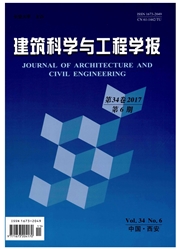

 中文摘要:
中文摘要:
探讨了装配式混凝土框架结构防连续倒塌研究中几个值得关注的问题;强调了防连续倒塌子结构受力机制的复合与机制转移的全受力过程、楼板和空间受力对受力机制的影响;指出结构防连续倒塌设计相关的国内外规范在设计方法、界定倒塌范围、荷载组合、验收标准等方面均存在一定的差异。结果表明:装配式混凝土框架结构与现浇混凝土结构的以下差异值得注意,主要包括初始缺陷、节点/连接与结构体系的关联性、"等同现浇"的内涵与困惑、现有设计方法的适用性;装配式混凝土框架结构的防连续倒塌研究内容和重点应在整体稳固性分析与量化指标、节点和子结构试验、数值模拟与参数分析、设计方法等方面。这些问题的阐述可为装配式混凝土框架结构研究和设计提供一定参考。
 英文摘要:
英文摘要:
Some noticeable problems in the study of progressive collapse of precast concrete frame structures were discussed. It was emphasized that the whole process of precast concrete frame sub-structures, the combination and transformation of the load-bearing mechanism, and the influence of slabs and spatial load-bearing mechanism should be considered. There were some differences in design method, the definition of collapse scope, load combination and acceptance criteria among different codes in China or abroad. The results show that the following differences between precast concrete frame structure and cast-in-place concrete structure are worth noting, such as the sources of initial defects, the relevance between the connection performance and the structural system, the meaning of "equivalent to cast-in-place concrete structure", and the applicability of the existing design method. The contents and key points of progressive collapse of precast concrete frame structures should focus on the quantitative indexes of robustness, experiments on connections and sub-structures, numerical simulation, parameter analysis and design methods. The statement of these problems can provide a reference for researchers and designer.
 同期刊论文项目
同期刊论文项目
 同项目期刊论文
同项目期刊论文
 期刊信息
期刊信息
